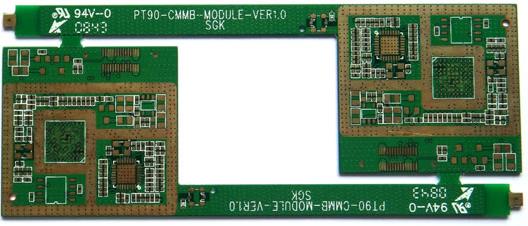In order to ensure the quality of the function and performance of the PCB copy board, various tests need to be done after the PCB copy board. Otherwise, the quality of PCB copy board cannot be guaranteed, and it can only be guaranteed after various tests.
1. Electrical test
In the production process of electronic products, the cost of defects caused by defects has different degrees in each stage. The earlier it is discovered, the lower the cost of remediation. For PCB manufacturers, electrical testing is for early detection of circuit functional defects. Test conditions and test methods mainly include test data sources and formats, test conditions, such as voltage, current, insulation and connectivity, equipment manufacturing methods and selection points, test chapters, and repair specifications.
In the PCB manufacturing process, the three stages that must be tested are after the inner layer is etched, the outer layer is etched, and the finished product.

2. Electrical measurement methods and equipment
The electrical test methods are: special type, general purpose, flying probe type, non-contact electron beam, conductive cloth, capacitive and brush test. Among them, there are three most commonly used equipment, namely special test machine and general purpose test. Machine and flying probe test machine. In order to better understand the functions of various devices, the following will compare the characteristics of the three main devices.
1. Dedicated test
The special test is a special test mainly because the fixture used is only suitable for one material number, and boards of different material numbers cannot be tested and cannot be recycled.
2. Universal testing
The basic principle of the general-purpose test is that the layout of the PCB circuit is designed according to the grid. The hole position uses a G10 base material as the mask. Only the probe at the hole position can pass through the mask for electrical measurement, so the jig is easy to make And fast, and the probe can be reused. The number of general-purpose test points is usually more than 10,000 points. A test with a test density or is called an on-grid test, which is an off-grid test. The fixture must be specially designed. Generally, the test density of a general-purpose test can be Up to QFP.
3. Flying probe test
The principle of flying probe test is very simple. It only needs two probes to move x, y, z to test the two end points of each circuit one by one, so there is no need to make additional expensive jigs. But because it is an endpoint test, the test speed is extremely slow.
Three, technology comparison
Flying probe test is currently the most suitable electrical test equipment for small-scale production and samples. However, if it is to be used in medium-to-mass production, the test cost will be greatly increased due to the slow test speed and the expensive equipment. No matter what level of board is used and special type, as long as the output reaches a certain quantity, the test cost can reach the standard of economies of scale, and it only accounts for 2~4% of the selling price. However, as the speed of change in electronic products accelerates, the product life cycle of a single circuit board design version has become shorter. E-Beam, CEM or plasma discharge technologies that are currently being actively improved will be a good and feasible solution for electrical testing if they can improve test efficiency.